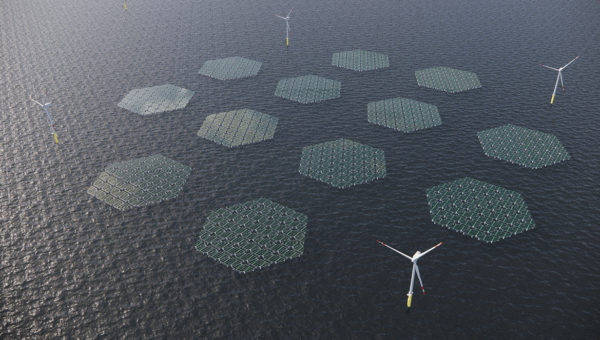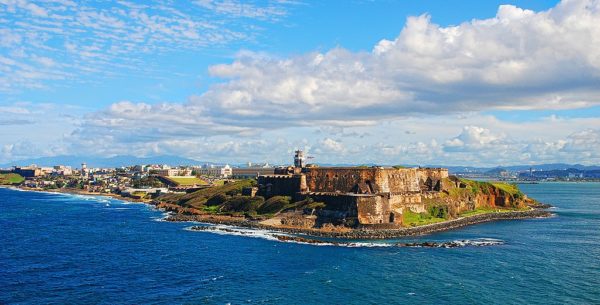Indeed there are so many trends to review in 2022 that we’ve had to split them into two articles. So, without further ado, here are our first three PV project and application trends for 2022:
Hybridization
Solar-wind hybrid (SWH) projects are a growing trend in several parts of the world, especially those with congested grid connection processes or appositely correlated wind and solar peaks. The trend of SWH projects is perhaps best on show in India and the United States. One of the many reasons India is so keen on SWH projects is for their ability to mitigate renewable energy doubts when the wind doesn’t blow or the sun doesn’t shine.
Bridge to India’s (BTI) managing director, Vinay Rustagi, said that SWHs “are becoming increasingly popular due to their smoother power output profile. We are seeing a trend in India where the utilities and even large corporate consumers are preferring SWH over plain solar projects despite higher cost.”
Jennifer King, a research engineer for the US National Renewable Energy Laboratory (NREL), told pv magazine that SWS systems are effective tools for avoiding transmission congestion.
“We probably won’t be able to build transmission fast enough to reach our decarbonization goals in time,” said King. “Hybrids can help because it provides a cost-effective (enough) way to build in sub-optimal resource areas but at least where there is existing transmission and avoided grid congestion.”
Hybrids not only allow developers to maximize their grid connection, but allow increased flow of renewables closer to where said energy is being consumed – the key to efficiency and grid stability. Ultimately, King said, “the limitations of the transmission system are really driving hybrids. If the transmission system was built out perfectly, we would not need hybrids.”
Another grid-congested and much more land-conscious continent, Europe, is also beginning to see the attraction of SWS systems. In Spain, one of the countries leading the SWH push, the lure is provided by the capex saving gained in sharing a grid connection.
Further north, in Denmark, and the retrofitting of onshore wind farms with solar has already begun. Eurowind Energy’s head of public affairs, Joachim Steenstrup, told pv magazine that the wind in Denmark doesn’t blow in July, but noted that there’s no sunshine in January.
“They complement each other excellently,” said Steenstrup. “If we had 100 MW of wind and 100 MW of solar sharing the same 100 MW grid connection, the loss would only be 8% (periods of overlapping generation), and if you look at how valuable that 8% is, it’s worth next to nothing, because both wind and solar would be active and so power prices would be through the floor.”
Hybridization is not limited to land, however, as this next trend will show.
Offshore floating PV
Floating PV (FPV) is now a well-established niche in the solar sector, but as the utility of FPV proves itself again and again, the lure of the open sea grows stronger. After all, there are literal oceans of space for offshore FPV to take advantage of, and thanks to project developers pushing the boundary, the coast is beginning to clear.
Of course, offshore PV is of particular interest to nations without much land to spare but a lot of coastlines to play with, such as the Netherlands, Malta, Japan and Singapore.
Popular content

Image: Ocean Sun
“In a place like Malta a 20 MW, let alone a 100 MW, solar park is unthinkable,” says Luciano Mule’Stagno, director of the Institute for Sustainable Energy and group leader of the Solar Research Lab at the University of Malta. “But we can easily find suitable places for several of these plants at sea. Coupled with the ever-falling cost of energy storage, I can see a place like Malta running on 100% renewables (FPV -plus-offshore wind) in 10 to 15 years.”
As offshore FPV is still in its early stages, various designs are vying for supremacy, including Norwegian-headquartered Ocean Sun’s flexible circular surface membrane modelled on a giant water lily, and Dutch outfit SolarDuck’s raised triangular platforms capable of interlocking.
SolarDuck, with partner German utility RWE, launched the Merganser project in 2022, a 500 kW pilot project aiming to withstand winter storms in the North Sea. Though the project is still ongoing, in November 2022 SolarDuck announced it had been selected to build a 5 MW offshore FPV project with the Hollandse Kust West offshore wind farm in the North Sea.

Image: Solar Duck
Islandable microgrids
Islandable microgrids are a growing trend, especially in remote regions at the end of electricity networks or parts of the world prone to natural disasters and unreliable grids. Solar-powered microgrids can provide a community with more stability and independence, allowing vulnerable regions to not rely on distant sources of generation as was demonstrated in recent years in places like Australia and California as a result of wildfires, or Puerto Rico in the wake of hurricanes.
An islandable microgrid is a system of generation (solar) combined with storage that is both grid-connected and capable of hiving itself off into an island. This capability means communities can contribute their solar generation to the grid, but if they grid fails them they are not left in the dark.
For Jana Ganion, director of sustainability and government affairs for Blue Lake Rancheria (BLR), a federally recognized Native American tribal government located in rural northern California, the state’s precautionary energy shutoff events are known to last several days. Thankfully, BLR is home to a pioneering microgrid system that has demonstrated its value in a crisis several times already.
According to Warda Ajaz, a research analyst at Global Energy Monitor who has studied microgrid adoption in the US extensively, “disasters act as a key landscape pressure for the adoption of microgrids in the US.” And it’s not just Californian wildfires either, as one of Ajaz’s interviewees said of the New York University (NYU) microgrid in Manhattan: “One of the shining examples [during Hurricane Sandy] was when lower Manhattan was dark… NYU [microgrid] was the only thing running and operating downtown. A lot of people call it the beacon of light in the darkness of Sandy, all of a sudden people started looking into it and saying, ‘Hey, this might be a good solution for our potential resiliency issues.’”
But when it comes to resilience in the face of hurricanes, there are few more experienced that Puerto Ricans. In the wake of Hurricane Maria in 2017, and Hurricane Fiona in September 2022, Puerto Ricans are increasingly turning to solar and now islandable microgrids.
As Puerto Rico generates 70% of its energy in the south, but 70% of its population live in the north, when a hurricane topples power lines traversing the island’s mountainous interior, the outages can take a long time to repair. Hence why community microgrids like in the rural community of Castañer are proving a testing ground for the wider adoption and interconnectivity of microgrid systems.
This sense of Puerto Rico as a laboratory for grid redevelopment is not just a nice idea to put some optimistic gloss on a catastrophic situation. Indeed, after the success of the Castañer microgrid during Hurricane Fiona, the US Department of Energy decided to use the microgrid as a “dynamic laboratory” for the transmission and distribution provider LUMA to monitor how such distributed resources can help to bring back power after an outage.

Image: Wikimedia Commons, Francisco Jose Carrera Campos
Consisting of 225 kW of solar and 500 kWh of battery storage, the Castañer microgrid is the product of the community’s own organization and the New York-based Interstate Renewable Energy Council’s (IREC) Solar Business Accelerator Program, which is funded by the US Department of Commerce’s Economic Development Administration.
IREC Program Director Carlos Alberto Velázquez says the success of the microgrid system during Hurricane Fiona, not just for the five local businesses it powers but the resiliency hub it created when the grid failed, means it has “already been identified as an important component of the new grid, albeit a tiny part, but in the future there will be hundreds of these microgrids across Puerto Rico.”
This content is protected by copyright and may not be reused. If you want to cooperate with us and would like to reuse some of our content, please contact: editors@pv-magazine.com.



By submitting this form you agree to pv magazine using your data for the purposes of publishing your comment.
Your personal data will only be disclosed or otherwise transmitted to third parties for the purposes of spam filtering or if this is necessary for technical maintenance of the website. Any other transfer to third parties will not take place unless this is justified on the basis of applicable data protection regulations or if pv magazine is legally obliged to do so.
You may revoke this consent at any time with effect for the future, in which case your personal data will be deleted immediately. Otherwise, your data will be deleted if pv magazine has processed your request or the purpose of data storage is fulfilled.
Further information on data privacy can be found in our Data Protection Policy.